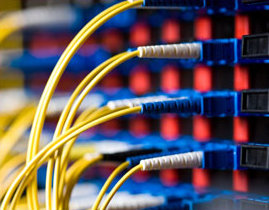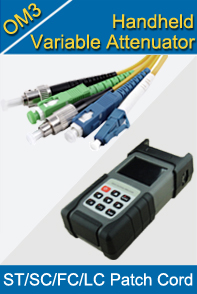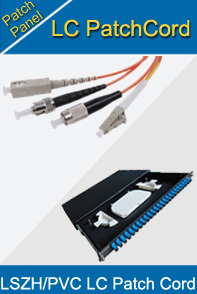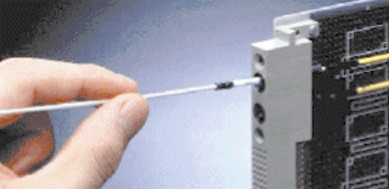-

- Sopto Home
-

- Special Topic
-

- Patch Cord Knowledge
-

- Patch Cord-Bulkheads and Receptacles Cleaning Techniques
Patch Cord Knowledge
- Fiber Optic Connector Ferrule Design
- Fiber Optic Connector Design
- E2000 to ST Fiber Patch Cable Overview
- Acceptable and Unacceptable Fiber Connector End-Face Finishes
- Using Wipes and Cleaning Cassettes to Clean Fiber Patch Cords
- Not-Too-Tight Mating of Fiber Optic Connectors
- Matching Gel and Oils Contamination about Fiber Optic Connectors
- The Effect of Improper Use of Fiber Optic Connectors
- Why Fiber Optic Connectors are Fragile?
SOPTO Special Topic
Certificate



Guarantee
Except products belongs to Bargain Shop section, all products are warranted by SOPTO only to purchasers for resale or for use in business or original equipment manufacturer, against defects in workmanship or materials under normal use (consumables, normal tear and wear excluded) for one year after date of purchase from SOPTO, unless otherwise stated...
Return Policies
Defective products will be accepted for exchange, at our discretion, within 14 days from receipt. Buyer might be requested to return the defective products to SOPTO for verification or authorized service location, as SOPTO designated, shipping costs prepaid. .....
Applications
 Fiber Patch Cords have a widely application. Where the need for the optical fiber connection, where you need fiber optic patch cords.
Fiber Patch Cords have a widely application. Where the need for the optical fiber connection, where you need fiber optic patch cords.
Testing Equipment
FTTX+ LAN
Optical Fiber CATV
Optical Communication System
Telecommunication
SOPTO Products
- Fiber Optic Transceiver Module
- High Speed Cable
- Fiber Optical Cable
- Fiber Optical Patch Cords
- Splitter CWDM DWDM
- PON Solution
- FTTH Box ODF Closure
- PCI-E Network Card
- Network Cables
- Fiber Optical Adapter
- Fiber Optical Attenuator
- Fiber Media Converter
- PDH Multiplexers
- Protocol Converter
- Digital Video Multiplexer
- Fiber Optical Tools
- Compatible
Related Products
Performance Feature
Good Water-proof
Low insertion loss;
low reflection loss;
Stability, good repeatability;
High-precision ceramic ferrule;
Compatible with NTT standard;
Precision Grinding and fully testing;
Compliance with international standards
Patch Cord Knowledge
Recommended


Bulkheads and Receptacles Cleaning Techniques
Receptacles refer to packaged devices with optical ports. Many receptacle devices use lens based systems which are less sensitive to contamination as opposed to fiber, but can be damaged if cleaned improperly. If you inspect a receptacle device and are not able to focus on the endface cladding, then you have a lensed device and should not attempt to clean it. See Figure 1 and Figure 2 for sample images of the endface core and cladding.
We has found that the use of swabs for cleaning is not always very effective even for experienced operators. It might be better to leave an optical port alone unless signal effecting contamination is observed blocking the core. Contaminants can be pushed onto the endface in the process of the insertion of the swab.
Caution: Wet cleaning is not recommended for bulkheads and receptacles. Damage to equipment can occur.
Always make sure you plug in a clean mating connector in order to avoid cross contaminating the receptacle side. Ground in contamination is much harder to remove than loose debris. Remember, inspect first and clean only if necessary!
- Dry Clean: Lint-Free Swabs
This section describes dry cleaning techniques that uses lint-free swabs.
Tools
- Lint-free swabs
Figure 1

Caution: Never clean bulkheads or receptacles without a way to inspect them afterwards. Cleaning can actually leave the endface in a worse condition.
Caution: Read the reminders and warnings before you begin this process.
- Make sure that the lasers are turned off before you begin the inspection.
Warning: Invisible laser radiation might be emitted from disconnected fibers or connectors. Do not stare into beams or view directly with optical instruments.
- Remove the protective endcap and store it in a small resealable container.
- Inspect the fiber connector in the adapter or bulkhead with a fiberscope probe. Refer to the Connector Inspection Technique section.
- If the adapter is dirty, select the appropriate lint-free swab according to the connector ferrule size.
- Inspect the connector in the adapter again with a fiberscope probe.
- Insert the clean lint-free swab into the adapter. See Figure 2.
Figure 2

- Turn the swab several complete revolutions in the same direction.
- Properly dispose of the swab. Never reuse a swab.
- Repeat the cleaning process as necessary.
- Wet Clean: Lint-Free Swab
Caution: Improper cleaning can cause damage to equipment. The primary concern with the use of isopropyl alcohol is that it can be removed completely from the connector or adapter. Residual liquid alcohol acts as a transport mechanism for loose dirt on the endface. If the alcohol is allowed to evaporate slowly off the ferrule, it can leave residual material on the cladding and fiber core. This is extremely difficult to clean off without another wet cleaning and usually more difficult to remove than the original contaminant. Liquid alcohol can also remain in small crevices or cavities where it can re-emerge during fiber connection.
Caution: On female multifiber connectors, ensure no alcohol gets into the guide pin holes or it can come out during mating and contaminate your connection.
Tools
- 99% isopropyl alcohol
- Lint-free swabs
Caution: Never clean bulkheads or receptacles without a way to inspect them afterwards. Cleaning can actually leave the endface in a worse condition as alcohol residue is one of the most difficult contaminants to remove.
- Make sure that the lasers are turned off before you begin the inspection.
Warning: Invisible laser radiation might be emitted from disconnected fibers or connectors. Do not stare into beams or view directly with optical instruments.
- Remove the protective endcap and store it in a small resealable container.
- Inspect the connector with a fiberscope. Refer to the Connector Inspection Technique section.
- If the dry cleaning procedure did not remove the dirt from the fiber endface, then place one drop of 99% alcohol to lightly moisten a new lint-free swab. Do not oversaturate the swab.
Tip: Have a dry lint-free swab available for drying immediately after the cleaning. Make sure that the drying swab stays clean. See Caution
- Lightly press and turn the dampened swab to clean the ferrule face.
- Immediately after you clean, lightly press and turn the second swab (dry) to dry any alcohol that remains from the ferrule face.
- Properly dispose of the wet and dry swab. Never reuse a swab.
- Inspect the connector again.
Related Knowledge:



